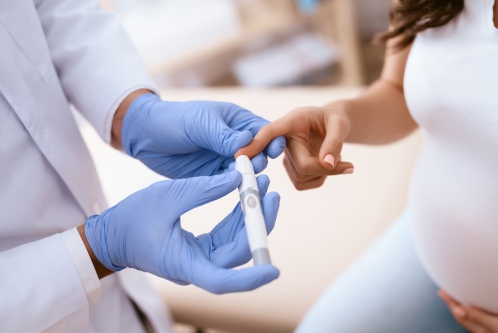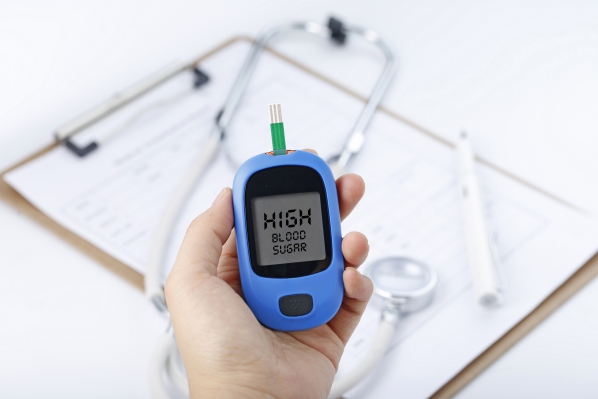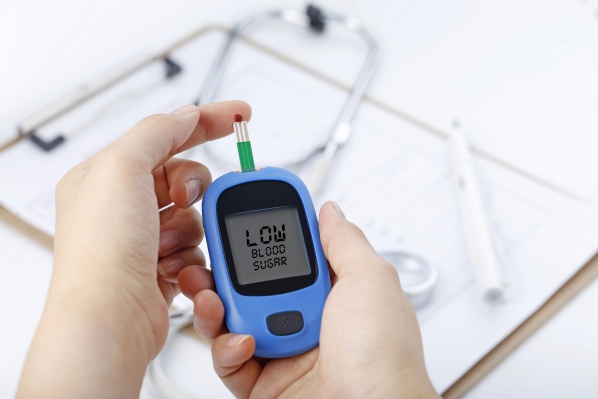What is Gestational Diabetes?
Gestational diabetes is diabetes that has been diagnosed for the first time during pregnancy. Normally, during pregnancy, your body develops some degree of resistance to insulin. Gestational diabetes develops when your pancreas is not able to overcome the resistance developed during pregnancy.
In the United States, about 6% of pregnant women have gestational diabetes. The prevalence of gestational diabetes varies from country to country as it depends on the level of screening and the diagnostic criteria for diabetes in that particular country. Around the world, approximately 17% of pregnant women have gestational diabetes.
In gestational diabetes, there is an excessive amount of sugar in your blood. Therefore, it is very important to make the diagnosis the earlier possible and initiate appropriate treatment to prevent complications that are associated with gestational diabetes. There are several treatment options available for proper management of gestational diabetes.
What are the causes and risk factors of gestational diabetes?
The exact cause of gestational diabetes is not known. However, there are factors that can increase the risk of having the condition including:
- Being overweight or obese
- Having a history of previous gestational diabetes or prediabetes
- Not doing enough exercise
- Having a family history of diabetes
- Having polycystic ovarian syndrome
- Being black, hispanic or of Asian origin
- Previous delivery of a baby weighing more than 4 kilograms
- Recently using glucocorticoid medications
- Having multiple pregnancies

What are the signs and symptoms of gestational diabetes?
The signs and symptoms of gestational diabetes may or may not be present at the time of diagnosis. Most of the time, gestational diabetes is diagnosed during routine screening among pregnant women. However, gestational diabetes may present with similar symptoms as diabetes in general including:
- Fatigue
- Increasing thirst
- Nausea
- Blurry vision
- Recurrent infections on the skin, vagina or bladder
- Increased frequency of urination
- Itching in the genital area
- Presence of sugar in urine
Making a diagnosis
Screening is usually done during the second trimester of pregnancy (24-28 weeks) to see whether an individual without any symptoms, but who is at high risk, has gestational diabetes. If you have risk factors for gestational diabetes, testing may have to be done earlier. These risk factors include:
- Obesity
- Previous history of gestational diabetes
- Strong family history of diabetes
- History of polycystic ovarian syndrome (PCOS)
Screening can be done using either the one-step or two-step approach:
- One-step approach: In the one-step approach, only a diagnostic test is performed. In this test, your doctor will make you swallow a sugar solution containing a specific amount of sugar. Your blood sugar level will be taken at a specific time interval. This test requires you to fast overnight prior to the test.
- Two-step approach: This is the most commonly used approach to screen for gestational diabetes in the United States. As the name suggests, it involves two steps. The first step involves ingesting a sugar solution and measuring the blood sugar level one hour post ingestion. This step does not take into consideration the time when you had your last meal. If your blood sugar level is high at this step, a second test is carried out. This involves ingesting a sugar solution containing more sugar compared to the first step. Your blood sugar levels are then taken 3 hours after swallowing the solution. If your blood sugar level is above normal during this step, the diagnosis of gestational diabetes is made.

How is gestational diabetes treated?
Once the diagnosis of gestational diabetes has been made, there are several treatment modalities and lifestyle changes that will have to be implemented for the benefit of both the pregnant woman as well as the baby. The main goal of the treatment for gestational diabetes is to decrease the likelihood of developing complications during the pregnancy. The following are included in the management of gestational diabetes:
- Change in eating habits: The initial step in the management of gestational diabetes is to change the way you eat. A dietician, nurse or a diabetic educator will help and guide you in the changes you have to bring about in your diet. Sweet foods and beverages should be avoided. It is also recommended to avoid adding sugar to your food and drinks. Decrease your consumption of saturated fats. Foods rich in carbohydrates should be consumed in moderation. Increase your intake of vegetables and healthy fats such as olive or canola oil.
- Blood sugar monitoring: If you have been diagnosed with gestational diabetes, you will have to learn how to check your blood sugar levels as well as recording the results on your own. Your doctor or nurse will teach you how to use a blood sugar meter. In general, you will be requires to measure your blood sugar level before having breakfast in the morning as well as one to two hours after breakfast, lunch and dinner.
- Physical activity: Your doctor will know best what are the exercises recommended for you during your pregnancy. Doing physical exercise can help in controlling your blood sugar levels by making your body cells more sensitive to insulin.
- Insulin injections: Among women diagnosed with gestational diabetes, 15% will require insulin injections for the management of their condition. It helps to decrease the blood sugar levels and decrease the risk of having complications arising from gestational diabetes. Insulin is administered only through injections. A healthcare professional will teach you how to withdraw and inject the insulin.

If you managed to control your blood sugar levels properly and other complications are not present, the ideal time for delivery is between 39-40 weeks of pregnancy.
Your blood sugar levels will still be monitored during labour as high blood sugar levels during labour can lead to complications for the baby before and after delivery. After delivery, most women will have a normal blood sugar level and will not require further treatment for the condition. Your doctor will check your blood sugar levels after delivery. After delivery, you will still have to be tested for type 2 diabetes as you have an increased risk of having it if you had gestational diabetes.

What are the complications of gestational diabetes?
If proper management is not initiated once the diagnosis of gestational diabetes is made, several complications may ensue including:
- Increased birth weight: High blood sugar levels can lead to large or very large babies. This can lead to difficult deliveries as the baby may be stuck in the birth canal, resulting in injuries or caesarean section birth.
- Preterm birth: uncontrolled blood sugar can increase the risk of early labour and delivery before the due date.
- Hypoglycaemia: Babies born from mothers with gestational diabetes have a higher risk of having hypoglycaemia (low blood sugar levels) after birth. This condition can be very dangerous to the baby and management should be started in those babies.
- Obesity and type 2 diabetes mellitus: Children born of mothers with gestational diabetes are at increased risk of being obese or having type 2 diabetes later in life.
How can gestational diabetes be prevented?
Adopting a healthy lifestyle and habits, even before pregnancy, can decrease your risk of having gestational diabetes. These include:
- Maintaining a healthy weight
- Eating healthy
- Exercising on a regular basis
Prognosis of gestational diabetes
The majority of women with gestational diabetes will revert back to normal after delivery of the baby. However, once you have had gestational diabetes in your life, you are at increased risk of having the same condition again in future pregnancies.

Source:
Durnwald, C., 2020. Diabetes Mellitus In Pregnancy: Screening And Diagnosis.
Caughey, A., 2020. Gestational Diabetes Mellitus: Obstetric Issues And Management.
Durnwald, C., 2020. Gestational Diabetes Mellitus: Glycemic Control And Maternal Prognosis.






